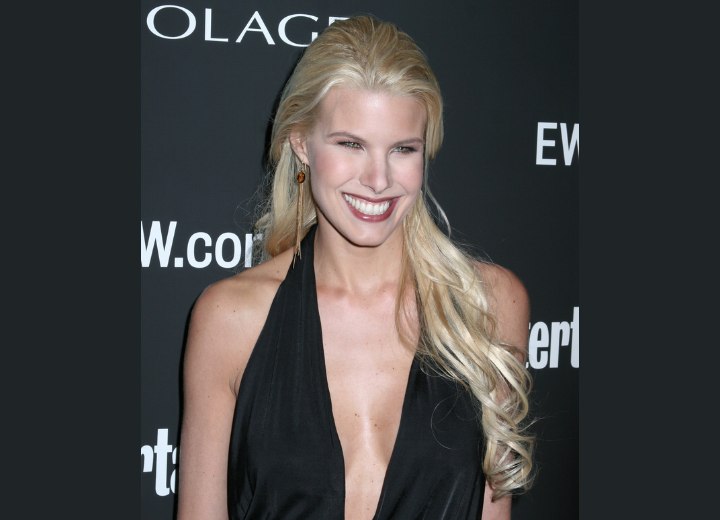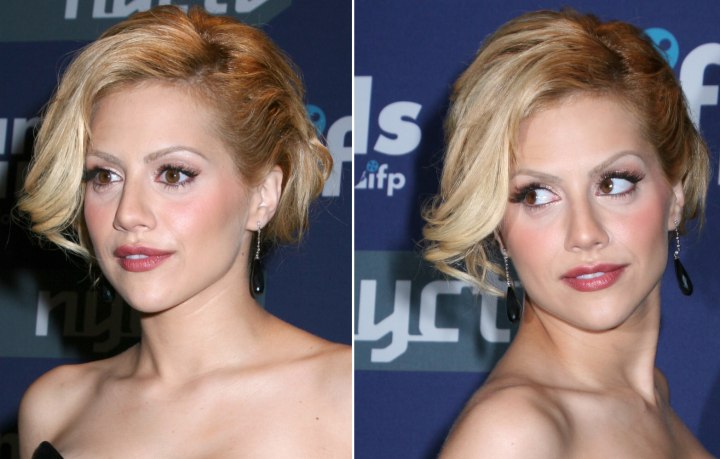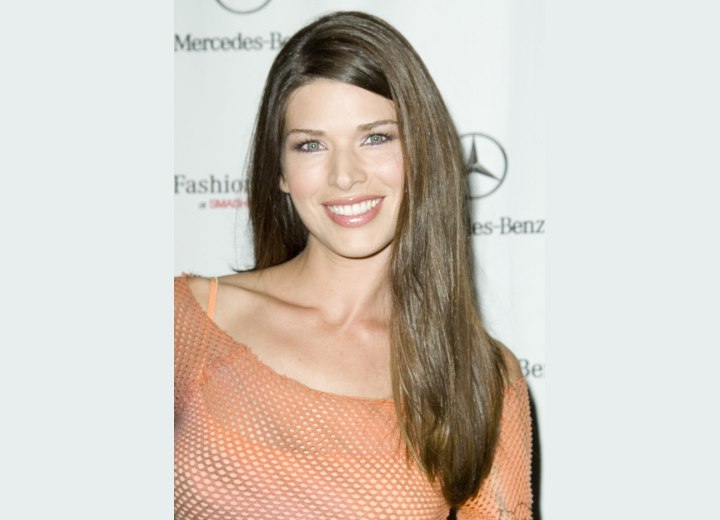Typically, most braided hairstyles are worn by young women and girls under the age of fifteen. The reason given most often by mothers who frequently braid their daughter's hair is that young girls with hair long enough to wear braided can have their hair styled in such a way that the hair will look groomed for as long as possible and will remain tangle-free while the child goes about her daily activities. Mothers who are practiced at braiding their daughter's hair love the fact that they can do the child's hair and not worry that at bedtime or bath-time they will face the headache (for the girl, often literal headache) of combing out tangles and snarls.




However, whether because of centuries of societal assignment, or some inherent sense of aesthetic, many braided hairstyles just seem to look more appropriate on younger women. This may be because braiding seems to be "whimsical" or "playful" in many circumstances, no matter how 'involved' the style is.
Or, perhaps, the level of detail and 'sophistication' of modern hairstyling techniques is so far removed from the looks achieved by braiding that these older techniques seem immature by comparison. There are many exceptions. Many simple, sophisticated looks are created using braids that both fit any occasion and flatter a woman's face. Yet in spite of this, the opinion that most braiding styles look better on younger women is nearly universal.
This was not always the case.
We are all aware that hairstyles have changed throughout history. It is a fact well- documented by paintings, tapestries and other artwork through the ages. Modern women have the benefit of changing mores, and advances in styling technologies that allow them the freedom to wear their hair virtually any way that they want. In earlier periods of history, we see that for women, long hair was the custom. Artwork from the Medieval and Renaissance periods show us many women who wore their hair in elaborate braids and styles, with hair that fell well past their hips in most cases.
It should be noted that these styles did not reflect the norm among the populace. Elaborate hairstyles were not to be found among the average woman in the periods, in spite of their prevalence in portraiture artwork from these eras. We, the viewer, must remember that only in very rare cases was a "common" woman ever depicted in an artist's work. Most artists created their pieces when commissioned by wealthy merchants and nobles, and these pieces were usually to be done to immortalize a favored family member.
The women found in such portraits were members of wealthy families, with dozens if not scores of servants in the household, many of whom were assigned the sole task of assisting the lady in bathing, grooming and dressing. There is also the fact of a much "slower" pace to life in the earlier eras, and many ladies of standing spent hours being groomed and coiffed in elaborate hairstyles for the various social events to which she would be invited.
Because of this, elaborate and complicated braids would be created and worn for days at a time, which seems less unusual when you consider that women's dresses of the period were usually sewn directly onto the lady with detachable portions such as skirts and sleeves that could be removed for sleeping. Particularly in Medieval periods, braids were the fashion because of the long-wearing nature of the styles. The amount of time required to braid hair that was often several feet long was lessened when the presence of grooming maids is factored in.




However, whether because of centuries of societal assignment, or some inherent sense of aesthetic, many braided hairstyles just seem to look more appropriate on younger women. This may be because braiding seems to be "whimsical" or "playful" in many circumstances, no matter how 'involved' the style is.
Or, perhaps, the level of detail and 'sophistication' of modern hairstyling techniques is so far removed from the looks achieved by braiding that these older techniques seem immature by comparison. There are many exceptions. Many simple, sophisticated looks are created using braids that both fit any occasion and flatter a woman's face. Yet in spite of this, the opinion that most braiding styles look better on younger women is nearly universal.
This was not always the case.
We are all aware that hairstyles have changed throughout history. It is a fact well- documented by paintings, tapestries and other artwork through the ages. Modern women have the benefit of changing mores, and advances in styling technologies that allow them the freedom to wear their hair virtually any way that they want. In earlier periods of history, we see that for women, long hair was the custom. Artwork from the Medieval and Renaissance periods show us many women who wore their hair in elaborate braids and styles, with hair that fell well past their hips in most cases.
It should be noted that these styles did not reflect the norm among the populace. Elaborate hairstyles were not to be found among the average woman in the periods, in spite of their prevalence in portraiture artwork from these eras. We, the viewer, must remember that only in very rare cases was a "common" woman ever depicted in an artist's work. Most artists created their pieces when commissioned by wealthy merchants and nobles, and these pieces were usually to be done to immortalize a favored family member.
The women found in such portraits were members of wealthy families, with dozens if not scores of servants in the household, many of whom were assigned the sole task of assisting the lady in bathing, grooming and dressing. There is also the fact of a much "slower" pace to life in the earlier eras, and many ladies of standing spent hours being groomed and coiffed in elaborate hairstyles for the various social events to which she would be invited.
Because of this, elaborate and complicated braids would be created and worn for days at a time, which seems less unusual when you consider that women's dresses of the period were usually sewn directly onto the lady with detachable portions such as skirts and sleeves that could be removed for sleeping. Particularly in Medieval periods, braids were the fashion because of the long-wearing nature of the styles. The amount of time required to braid hair that was often several feet long was lessened when the presence of grooming maids is factored in.
Post Title
→Braiding Hair cuts
Post URL
→http://wakexme.blogspot.com/2009/11/braiding-hair-cuts.html
Visit Design Wakexx XXYYY for Daily Updated Wedding Dresses Collection






